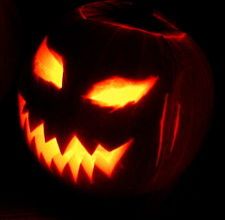Halloween History, Pagan Beginnings

Today, Halloween is a day of tricks, treats, candy, pumpkin carving, cider drinking and costume wearing; but the holiday has evolved immensely from its pagan beginnings.
Over 2000 years ago, the Celts, a people who lived in what is now the United Kingdom, Ireland, and northern France, celebrated their New Year on November 1. The New Year was associated with the end of summer and harvest season, and the beginning of cold, destructive winters. The Celts would often kill and eat weak livestock that they believed would not survive through the winter.
The Celts, who worshiped Pagan gods, commemorated this time with a festival called Samhain (sow-en). This time of year was associated with death for the Celts; they believed that the wall between the living and dead was thinnest the night before the New Year, which allowed spirits of all kinds to walk among the living.
Many of today’s Halloween traditions derive from the Pagan practices of the Celts. During their last night of the year, all manner of order was forgotten. Men would dress up as women, and women as men; people would play pranks such as moving livestock to different fields, or moving gates and fences from their proper places.
Since they believed that spirits of the recently deceased were most likely to emerge and cause trouble among the living, such as possessing people and ruining crops, many Celts would leave offerings of food and drink to the spirits, to either aid them to the afterlife, or ward them way. They would also feast and celebrate the lives of the deceased. People extinguished all of the fires in their homes in order to prevent evil spirits from haunting them.
A central aspect of Samhain was the worship by the Druids, or Celtic priests. The Celts brought crops and livestock to the priests who would sacrifice to the Pagan gods in large bonfires, praying for protection during the winter. During these celebrations, Celtics would dress in animal heads and skins and read each other’s fortunes.
One of the main influences of modern day trick-or-treating was the Celtic believe that faeries would roam about dressed as beggars and would go door to door asking for food. The belief was that those who helped the faeries were rewarded while those who didn’t were punished.
Learn more about Halloween: Roman and Christian influences, From Europe to America.
© Copyright IBTimes 2025. All rights reserved.






















